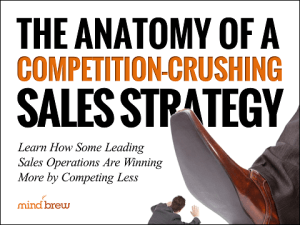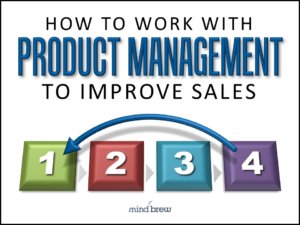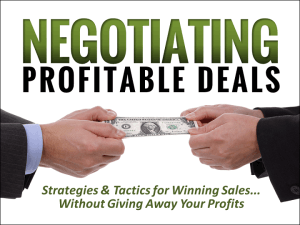Growth…Growth…Growth! Can you hear it? We certainly can.
The chorus is getting louder as companies look to capitalize on rising economic optimism and an increasingly favorable business climate. As a result, we’ve been witnessing a lot of sales operations in the process of “gearing up” to enable and drive significantly more business.
In general, these preparations and fortifications tend to be focused on tactical selling systems and processes. And no one in their right mind would suggest that improving and optimizing tactical execution is ever a bad thing.
That said, however, we do have to ask if tactical execution is the only thing sales operations should be focused on right now? And, we have to question whether tactical execution is the best thing to focus on right now?
After all, aren’t there some important strategic considerations that warrant our time and attention as we gear up for growth?
In a wide-ranging Playbook interview, Michael Perla, a principal at Symmetrics Group and an expert in sales strategy and effectiveness, discusses a number of strategic questions that need be asked and answered to facilitate growth in the most efficient, profitable, and sustainable manner. For example:
1. Specifically what or where should we be trying to grow?
This question is about, as Michael put it, “Making sure your ladder is against the right wall.” Attempting to grow everything across the board is just not a winning strategy. Neither is pushing forward blindly, hoping that whatever growth you manage to produce will just “shake out” in some advantageous way.
Instead, you need to think hard about which markets, which segments, and which customers are actually worth growing. Now, some companies are scared to death to make these kinds of choices (your competitors, hopefully). But these decisions are the very essence of sales strategy. Of course, these choices and decisions need to be made thoughtfully and analytically—but they need to be made.
2. Are our investments actually aligned to these priorities?
Once you’ve got your priorities identified, you need to make sure that your resources and investments are actually going toward those things. Michael shares a number of examples from his consulting work where companies were saying that their priorities were X, Y, and Z, while their resource allocations and investments suggested that their priorities were A, B, and C. As these misalignments were a bit of a surprise to those involved, they are clearly difficult to recognize when you’re very close to the situation.
So take a big step back and objectively assess where all of your time, money, and resources are actually being invested. And don’t be too surprised or disappointed should things not line up the way you want or expect—just look at it as a newfound windfall you can invest more judiciously in the future.
3. What’s the most efficient and effective sales architecture?
This question is related to a different facet of resource alignment. It’s about aligning the various elements of your sales architecture to the opportunities you’re trying to capture in the marketplace.
Which strata of customers are your most expensive field sales reps going to pursue? Which strata of customers is most profitably served by your inside sales team, or your ecommerce website? Which markets or segments are best served through your channel partners?
When you leave these sorts of decisions to chance…or individual salespeople…you’ll inevitably end-up wasting a lot of time and money. And you’ll probably create a fair amount of conflict while you’re at it.
So think about what makes the most sense for the various types of opportunities you’re pursuing. Figure out how best to leverage your different sales resources and channels. Be proactive. Map it out. Create some guidelines.
As you’re gearing up for growth, it’s only natural to gravitate toward improving your tactical systems and processes. But you have to recognize that tactical improvements will only…and can only…get you so far. To make the most of any situation, you also have to think strategically.
How to Gear Up for Growth
How to Accelerate "Land and Expand"
Anatomy of a Competition-Crushing Sales Strategy

The better your sales strategy, the easier it is for your sales team to achieve their objectives. But sales strategy is often misunderstood. In this on-demand training session, learn how leading sales operations are improving their sales strategies to win more business, while actually competing less.












